We have had a few thoughts about cycling calculations while riding our bicycle. And it seems that Colby have had similar ideas recently (comment previous post), so I guess it’s time to open an official discussion in a “formal” post.
This post may be a bit of everything, but I will try to keep it clear and logic.
The main background question, from an engineering viewpoint (not about traveling, meeting people, philosophy, etc.) is “Does it make sense to ride a bicycle?”
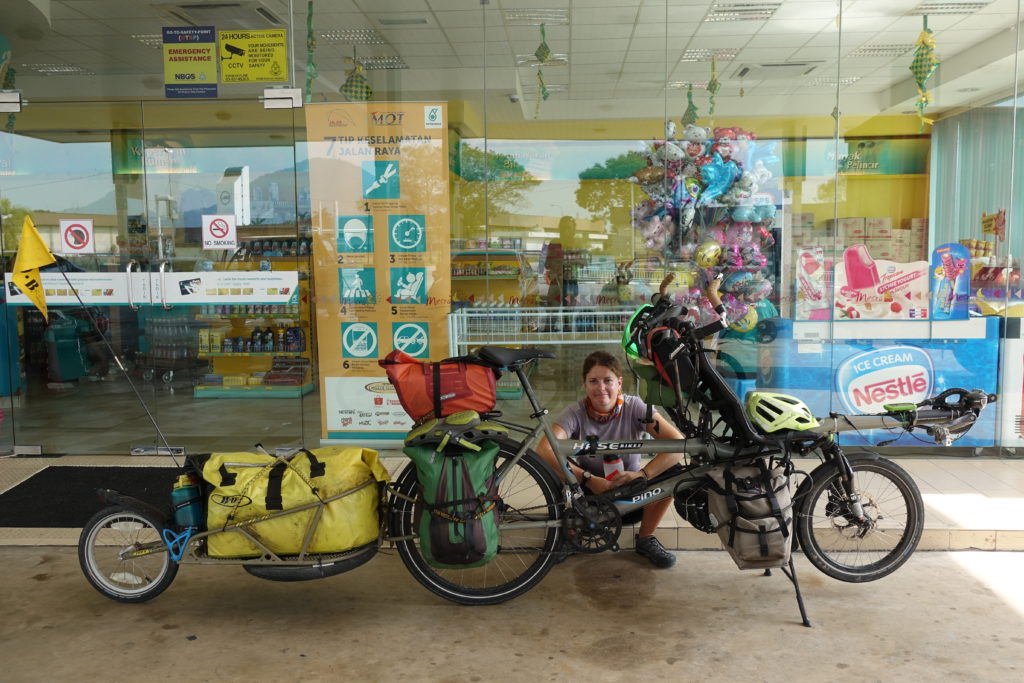
Different approaches:
I. Energy cost comparison
As written in a previous post about food, we spend a lot of calories during the day, and thus have a much higher intake of food. We are not using any precise equipment to give a good value, but our GPS routing device gives a value of about 3000 additional kCal spent per day each. Size matters, and I probably spend more than Cassie, but let’s keep it simple: 5000kCal/day for one person. The best way to estimate the calories would be to wear a heart-belt monitor – but it’s not particularly comfortable, and in addition to be something extra to carry around, we don’t really care about our weight and the exact heart rate value…
A regular person not exercising would normally have food intakes of about 2000kCal. That means +3000kCal x 2 people = additional 6000kCal daily
We bike about 80km/day when the road is fairly flat (less than 500mD+/day), slightly less on hillier days (although we have done up to 100km and 1200mD+ some days, and 30km with 150mD+ on others…).
1km therefore requires with two riders: 6000kCal / 80km = 75 kCal/km
a. Calculation based on our expenses
We did not detail the cost of food in our expenses. It is currently about 300Bahts/day (about 10US$ or 8€ for two people in Thailand including snacks, multiple coffee breaks (with sugar and milk so it must be considered!) and 3 meals (always eating out 😊). Malaysia was probably slightly more expensive (15$ – 12€ / day), Australia and NZ probably around 30US$/day (NZ slightly more, Australia slightly less, almost never eating out – pasta are cheap though).
We get:
NZ & Aus: 30$ / 10.000kCal * 75 kCal/km = 0,225$ per km (additional cost of cycling food: 18$/day)
Malaysia: 15$ / 10.000kCal * 75 kCal/km = 0,1125$ per km (additional cost of cycling food: 9$/day)
Thailand: 10$ / 10.000kCal * 75 kCal/km = 0,075$ per km (additional cost of cycling food: 6$/day)
b. Calculation based on fast-food chain
We could take a more standardized food price, through the BigMac-Index (published by ‘The Economist’) – although there is a small bias given that McDonald’s is a bit of the crappiest place to eat in rich countries, and often a luxury eatery in poorer countries. That nevertheless gives a price for its 257kCal. For information, we would need to eat 39 BigMac to cover our calories (or about 1 BigMac every 2km!), ridiculous (or Bob’s dream if he’s still reading)!
NZ: 4,51$ -> about 175,5$/day -> about 2,2$/km
Australia: 4,71$ -> about 183,3$/day -> 2,3$/km
Malaysia: 2,28$ (they have a strong competition from KFC…) -> about 88,7$/day -> 1,1$/km
Thailand: 3,72$ -> about 144,7$/day -> 1,8$/km
c. Calculation based on John-john-the-trader
Some alternatives could also be to buy some raw food products on commodities markets. Apart from being easier to calculate our budget globally without having to worry about the borders, that would possibly slightly become a boring culinary travel.
Nevertheless:
Raw sugar: 0,27$/kg -> 0,27$/3870kCal -> 0,70$/day -> 0,008$/km (yey, we can probably reach the moon on that budget!)
Palm oil: 582,25$/ton -> 0,582$/kg -> 0,582$/8840kCal -> 0,008$/km (surprisingly the same as sugar – but I guess we would ride faster carrying 1,13kg of palm oil everyday vs. 2,58kg of sugar…)
Bananas: 1,15$/kg -> 12,8$/day -> 0,16$/km (note that I’m not sure if we are supposed to eat the peel)
Shrimp: 12,9$/kg -> 129,6$/day -> 1,62$/km (we are not that far from McDonald’s anymore!)
d. Comparison with other means of transportation
– scooter: from our few rentals we had a consumption of about 1,5l/100km (two people riding)
– car: based on our Australian Hyundai: 6,5l/100km
|
|
Scooter |
Car |
||||
|
NZ (1,60$/l) |
2,40$/100km |
0,024$/km |
1,92$/day |
10,4$/100km |
0,104$/km |
8,32$/day |
|
Australia (1,1$/l) |
1,65 |
0,0165 |
1,32 |
7,15 |
0,0715 |
5,72 |
|
Malaysia (0,55$/l) |
0,825 |
0,00825 |
0,66 |
3,575 |
0,0358 |
2,86 |
|
Thailand (1,02$/l) |
1,53 |
0,0153 |
1,224 |
6,63 |
0,0663 |
5,304 |
Conclusion: Well, McDonald’s is definitely not a good idea, eating only shrimps either. Riding a scooter would be a cost saver (but we would be sad to no longer be able to try all sorts of food available in SE Asia!). Getting a diet based on raw sugar and palm oil (pretty much making your own Nutella) would short term save us a lot of money; however, we may have a larger medical bill at the end of the year (Dentist and heart doctors? Maybe even some case of that mysterious Kreislauf?). Also interesting is that although driving a small car is generally cheaper than cycling, the difference is not that large in Thailand where gas is quite expensive and food really cheap!
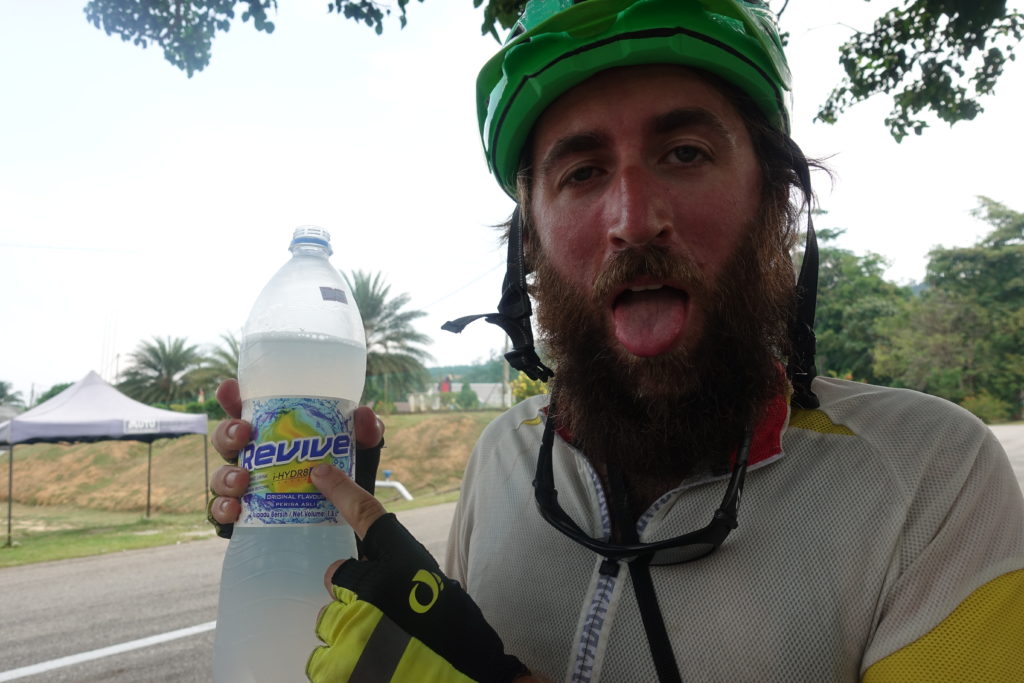 It can get insanely humid and hot in Malaysia! The weather forecast does not look too worrisome at first – until you check the heat index! 36°C (96°F) becomes 50°C (124°F) with 70% humidity…
It can get insanely humid and hot in Malaysia! The weather forecast does not look too worrisome at first – until you check the heat index! 36°C (96°F) becomes 50°C (124°F) with 70% humidity…
II. Energy consumption
That should be shorter, given that there is no fluctuation depending on the country!
Cycling on our tandem: 75kCal/km -> 0,313 MJ/km
Scooter (two passengers): 0,015l/km * 34,8 MJ/l = 0,522 MJ/km
Small car: 0,065l/km * 34,8 MJ/l = 2,262 MJ/km
Conclusion: we win! We are more efficient than those stupid noisy stinky polluting fuel-engines (we’ve had a lot of time on the bike next to cars to form our opinion towards them 😊).
Although I must concede that there is here another bias: producing food (i.e. also energy) requires a lot of energy (from the sun at one point or another, but often through a long food chain, and often with a lot of fossil fuels anyway…), producing fossil-fuels including distribution requires however a lot less of energy. But that would possibly be the start of a PhD (and we still want to win at the efficiency-rank)!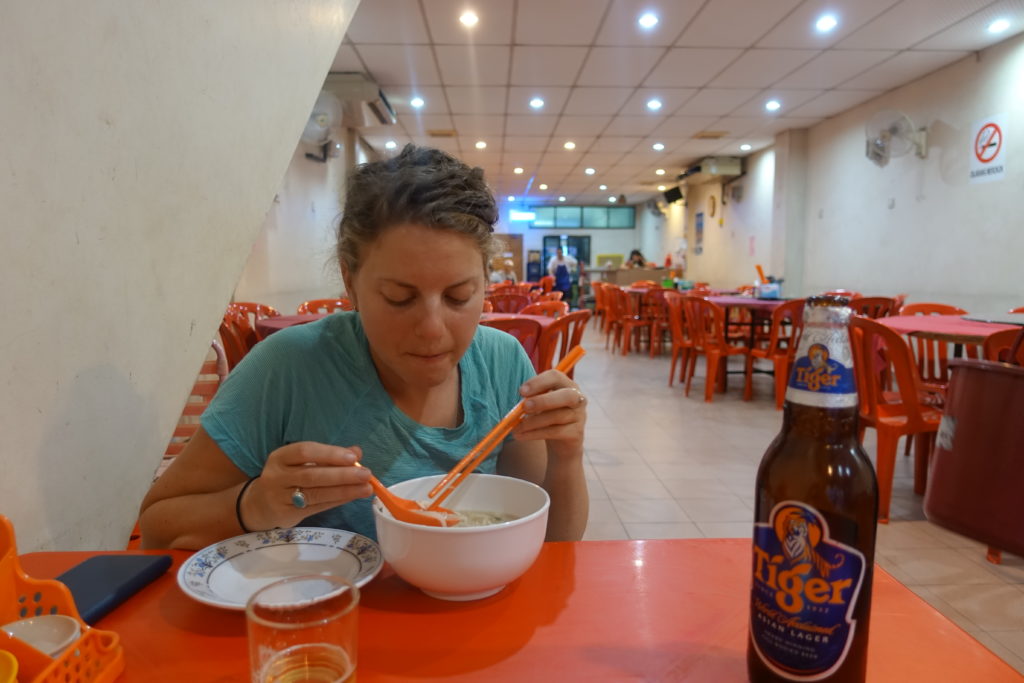
Something also to be noted, is that getting a scooter (and particularly a car) makes anyone drive much longer (often unnecessary) distance. While renting cars, we have rarely done days driving only 80km:
- Car: Going to a not-super-amazing viewpoint 20km away, sure! // Bicycle: meeeh, I’ve seen others!
- Car: Dropping all your luggage at a place for a week and doing day-trip from that place. // Bicycle: no way you bike back the same road! Let’s camp and do a loop instead!
- Car: I forgot to get some bread, let’s drive to the supermarket. // Bicycle: whatever, I still have a can of sardines!
- Car: If I take the highway, I can sleep-drive as long as I want // Bicycle: I’ve seen a sort of path going through the forest that does a shortcut, that probably goes through somehow!
III. Your turn!
Any thoughts? Any comments? I am glad you read all that post 🙂
I may also have done some calculation mistake, or approximation… you’re welcome to notice them! The Baccalaureate was over a decade ago 😉
You are also very welcome to open the discussion and have any questionings like Colby for that one – that gives us a lot to think about and discuss while on the road!
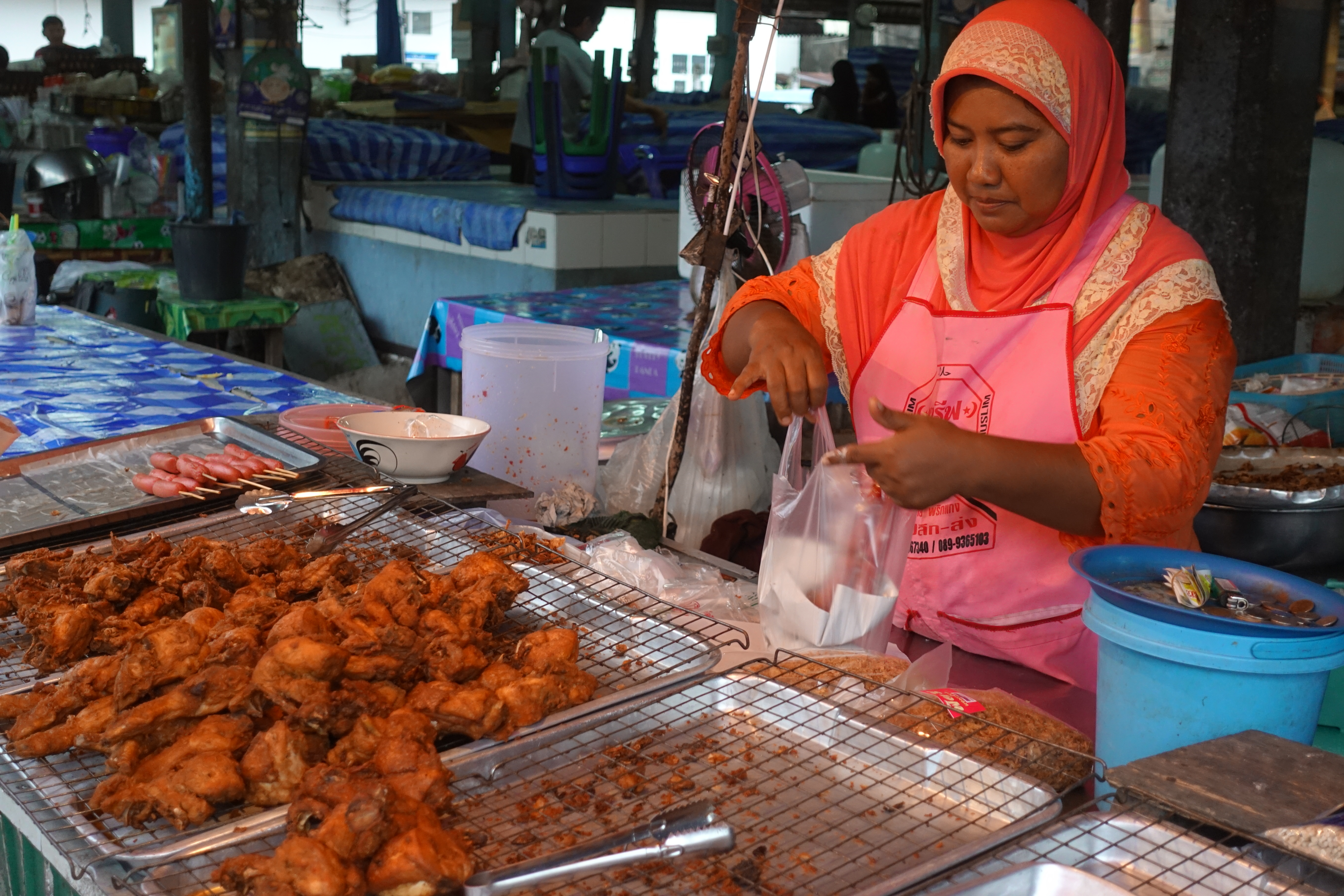
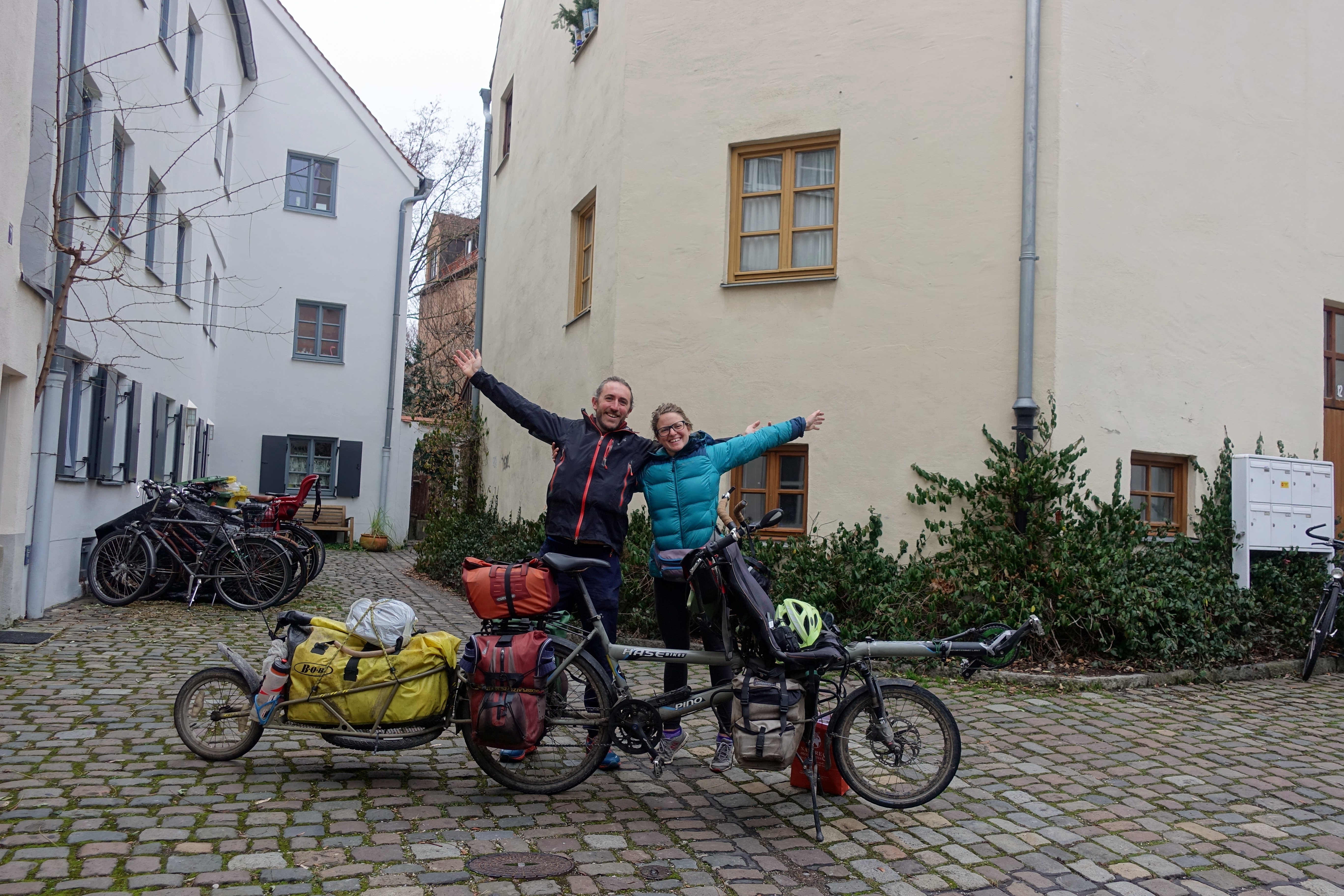

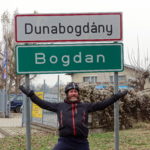

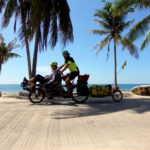
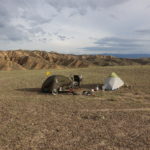
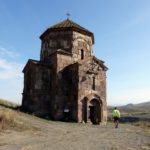
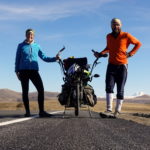
BTB
June 24, 2018 — 16:33
Great post! Have you been able to weigh yourself? That’d be the best determination if your caloric consumption requirements is correct.
Cassie & Cédric
June 25, 2018 — 15:31
Hi Brendan,
Well, the first idea of the blog was just to get a rough estimate – and compare particularly with small motorbikes, as those are super cheap here and consuming really little gas.
There are for sure some variables that would need to be more precisely estimated:
– Our caloric estimate is given by a small GPS device, and does not measure anything on the body directly (heart, etc.). I have entered my weight in it, but it does not consider that we use a fully loaded touring bike (i.e. 90kg instead of a 8kg road bike!).
– The GPS also estimate the calories mostly with the distance and the time, not the profile and speed: we’ve had days with very hilly steep terrain on dirt roads where we finished exhausted, and getting at the end a very small amount of calories spent… simply because Garmin calculates as if we where just going super slowly on a straight road
– Training effect: I have set the GPS to “unfit person” so that I could get an estimate matching better the touring pace (not a race on a super lightweight bike…)
-> so we probably actually spend less than the 3000kCal/day on a flat paved road, but that made things easier for the post 🙂
We haven’t weighted ourselves recently (I usually almost never weight myself anyway, except when it’s the only way to get the weight of luggage before a flight!), but we probably haven’t lost much in NZ/AUS (We however surely transformed fat into muscles! Does that need to be accounted to?). We may lose more in Asia though (the riding days are easier… but we are finding rice to not be very nutritive, and portions are pretty small).
But okay, taking all factors in consideration would take a bit more time than what it took me yesterday for that post 🙂
Cheers!
Colby
June 24, 2018 — 17:10
Cedric, and Cassie too – – truly the engineers living their dream (and that of many others)!
Pondering this thought a bit more about types of ‘fuel’ and ‘various modes of transportation’ – I for one like all the pics of food ‘fuel’ that you two have been consuming while primarily on your ‘self powered’ mode of transportation. If you two were using another form of transportation, with an ICE (internal combustion engine), would you have taken as many pics of the ‘fuel stations’? Hmmmm – pics of fuel stations might get a bit boring . . . ‘Honey, let’s do a selfie in front of this BP station’ . . . or ‘We haven’t take a pic of a Gulf station yet, have we?’ . . . or ‘Do you think we have too many pics of these Petronas stations – let’s skip on posting another one of them’. Damn, I’m hungry . . . heading off for some pizza (I’m still on that ‘see food’ diet). . .bye for now . . . can’t wait to meet up with you! Enjoy!
Cassie & Cédric
June 25, 2018 — 15:39
Fuel stations in Malaysia where really awesome, and I’m sure that car drivers have not paid any attention to them:
– air-conditioning (to cool down and escape the humidity for a few minutes)
– cheap snacks (which also means no need to pack anything in advance)
– shade (especially around noon on the equator when the sun radiates straight over you and tall but narrow trees become useless)
– bathrooms with tap water to soak your T-shirt and splash your face
Almost as great as mosques! (even though for snacks during the Ramadan we would usually have to cross the road, they are a lot more quiet, a lot less exhaust smokes and more vegetation)
Marie-Claude and Philippe
June 24, 2018 — 21:17
Hi Cassie and Cedric,
Your calculation may also miss the various fees triggered by maintenance of the bike (e.g. Tires, handlebar welding, chain, gears etc…). Driving a car would also be more incentive for visiting more and further thus extra cost.
It is also likely that you would not be so often invited while arriving in a car. But after a few hours of biking under the rain, your perception may vary and question again “Does it make sense to ride a bicycle?” .. 🙂 enjoy and beware of scooters and cars (even the small ones.)
Cassie & Cédric
June 25, 2018 — 15:51
Yeah, cars are definitely not the greatest way to travel!
-> Financially a disaster
-> Energetically not efficient (our 90kg loaded bike vs. 1500kg of metal carrying 130kg of humanoids)
-> The lowest of the low for conviviality (who waves at a car driver?!?)
-> Impossible to cross borders (especially in Asia)
-> and somehow even if not doing anything while driving, you end up really tired at the end of the drive
About rain in SE Asia, when you see a big dark cloud:
1- you accelerate 3minutes
2- veer to the side of the road
3- get a coffee with ice
4- wait 20 minutes
5- try to say 3 words in Thai thanks to Google-Translate (they usually do not understand what you are trying to say … until you make people read your phone directly)
6- then when you feel it’s easing with downpour start cycling again to enjoying a colder air and a wet T-Shirt!
Bob
July 1, 2018 — 20:41
Hey, I resemble that remark! Ha, just getting caught up now. Um…a half a Big Mac is 275 calories. Believe me, I know. Keep up the good work 🙂
Cassie & Cédric
July 2, 2018 — 01:39
Damn it! At least someone read it through and food a calculation error…
257kcal is actually for 100g of big Mac, but it’s 215g so yes 550kcal per burger.
That makes it a little less impressive but cheaper… still not enough to compete with rice and noodles. I’ll have to update the post in a few days.
Big Bob
July 2, 2018 — 06:20
Mike and Marssi tipped me off that I got a mention. I’m still a couple posts behind but will catch up this week. I’m better at eating than reading 😉
Cassie & Cédric
July 2, 2018 — 06:31
You’ll have time, the laptop gave us the proverbial middle finger (not sure if it’s due to heat exhaustion or some tropical virus) a few days ago and we need to find a repair shop in Bangkok.